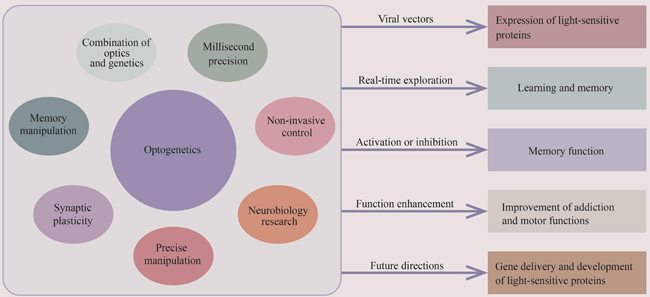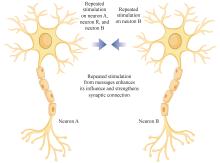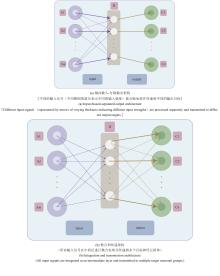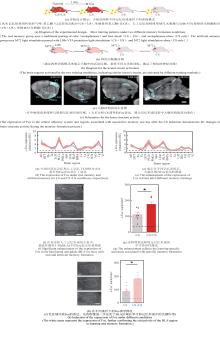|
||
|
Research on the application of optogenetic tools in learning and memory
Synthetic Biology Journal
2025, 6 (1):
87-104.
DOI: 10.12211/2096-8280.2024-042
Optogenetics represents an advanced technology that facilitates precise control of gene expression and neuronal activity in living cells through light. Introduced by neuroscientist K. Deisseroth in 2005, this methodology has transformed neuroscience research, empowering researchers to modulate excitable tissues and neural circuits with exceptional spatiotemporal accuracy. Optogenetics necessitates the expression of light-sensitive proteins, including channelrhodopsins, halorhodopsins, and various microbial opsins, within specific cells. Employing viral vectors and tissue-specific promoters, these proteins ensure targeted expression. Exposure to designated wavelengths of light permits these proteins to activate or inhibit cellular activity, thereby modulating neuronal behavior. The implementation of optogenetics has significantly enhanced comprehension of learning, memory, and neural plasticity. This technology enables the examination of the molecular dynamics associated with synaptic plasticity, long-term potentiation (LTP), and long-term depression (LTD), which are pivotal for memory. Real-time manipulating of specific neuronal populations can elucidate the intricate neural circuits involved in these phenomena. Additionally, optogenetics has facilitated the exploration of potential therapeutic approaches for neurological conditions such as Alzheimer’s disease by meticulously controlling memory-associated circuits. The utility of optogenetics transcends fundamental research, yielding promising prospects in addiction to studies and motor function enhancement. By modulating distinct neural circuits, it is possible to alter addiction-related behaviors and augment motor functions. Furthermore, the amalgamation of optogenetics with cutting-edge technologies like artificial intelligence and deep learning is anticipated to refine stimulation protocols, resulting in more precise and efficacious experimental outcomes. Notwithstanding its transformative capacity, the clinical application of optogenetics encounters significant obstacles, including the requisites for safe and effective gene delivery systems and the formulation of light-sensitive proteins with optimal characteristics for applications in human beings. Future investigations should concentrate on surmounting these hurdles while expanding the applications of optogenetics in neuroscience and related fields. The integration of optogenetics with multidisciplinary approaches is poised to unveil new realms in brain research, yielding profound insights into mechanisms governing memory, learning, and neural plasticity.

Fig. 2
Specific neuronal synaptic connections enhanced by the Hebb’s rule
(Applications of the Hebb’s rule in synaptic plasticity indicate that repeated activation of specific neurons can enhance synaptic connections, a mechanism that is fundamental in the processes of learning and memory formation.)
Extracts from the Article
图2通过颜色编码和流线形的线条来区分不同的输入群体,这些群体通过特定的放电模式(如示意图中的垂直线条所示的脉冲)影响目标神经元。放电模式在图中以水平时间线展示,显示了输入和结果之间的关系。图示中包含一个关键的变化过程,显示随着时间的推移,一些神经连接如何得到加强(线条加粗)而其他连接则逐渐消失(线条变细或消失)。这种可视化方法有效地揭示了神经连接的动态变化过程。
Other Images/Table from this Article
|




